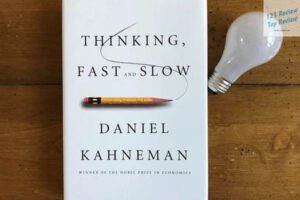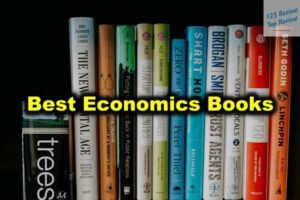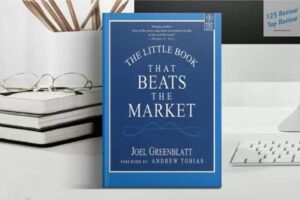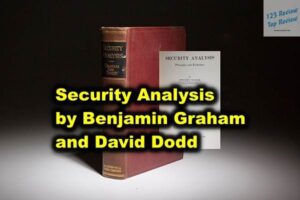The book “Your Money or Your Life” was originally published in 1992. This book has guided millions towards financial independence and a more meaningful life by re-evaluating their relationship with money. In this review, we will delve into the key concepts introduced by the authors, explore the nine-step program to financial independence, and examine the transformative questions posed by the book. Additionally, we’ll discuss common critiques and praise, and offer recommendations on who will benefit most from this book.
Key Concepts of the Book
Money as Life Energy
One of the most profound concepts introduced in “Your Money or Your Life” is the idea of viewing money as life energy. This perspective shifts the focus from money as a mere medium of exchange to a representation of the time, effort, and energy expended to earn it. By recognizing that money embodies the precious and finite resource of our life energy, readers are encouraged to spend and save in ways that are truly meaningful and reflective of their values.
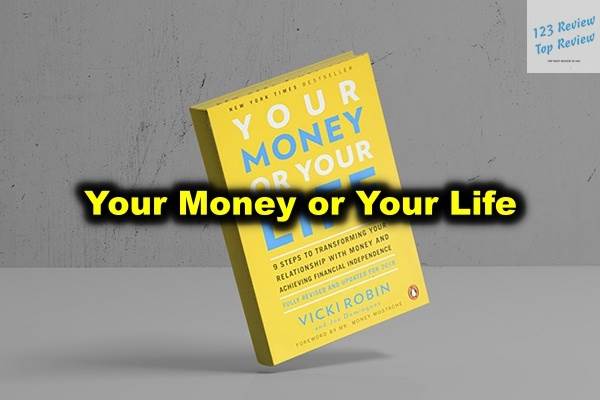
The Real Hourly Wage
Dominguez and Robin urge readers to calculate their real hourly wage, a concept that goes beyond the simple calculation of salary divided by hours worked. The real hourly wage includes all the hidden costs associated with employment, such as commuting, work-related expenses, and the time spent decompressing after work. By understanding the true cost of earning money, individuals can make more informed decisions about their jobs and lifestyles.
Value Alignment with Expenditures
The book emphasizes the importance of aligning expenditures with personal values. This means examining whether the money spent on various goods and services genuinely enhances one’s life and brings fulfillment. By prioritizing spending that aligns with core values and brings joy, individuals can reduce wasteful expenditures and increase their overall life satisfaction.
Nine Steps to Financial Independence
Step 1: Making Peace with the Past
The first step in the journey to financial independence is making peace with the past. This involves taking a comprehensive look at your financial history, including earnings, spending, and debts. By understanding past financial behavior and forgiving oneself for any mistakes, individuals can start with a clean slate and a clear vision for the future.
Step 2: Tracking Your Life Energy
In this step, readers are encouraged to track every cent that comes into and goes out of their lives. This meticulous tracking provides a detailed picture of spending habits and helps individuals understand how much life energy is being expended in different areas. This awareness is crucial for making informed financial decisions.
Step 3: Identifying Expenditures
Identifying and categorizing all expenditures is the next step. By creating categories for spending and analyzing where money is going, individuals can see patterns and areas where they might be overspending. This step is essential for making adjustments and aligning spending with personal values.
Step 4: Three Questions that Will Transform Your Life
This step involves asking three transformative questions about each expenditure: Did I receive fulfillment, satisfaction, and value in proportion to life energy spent? Is this expenditure in alignment with my values and life purpose? How might this expenditure change if I didn’t have to work for a living? These questions help in assessing the true value of each expense.
Step 5: Making Life Energy Visible
In step five, individuals create a chart to visualize their income, expenses, and the difference between them (their savings). This chart serves as a motivational tool, showing progress towards financial goals and highlighting areas that need attention.
Step 6: Valuing Your Life Energy – Minimizing Spending
This step focuses on minimizing spending without sacrificing quality of life. By seeking ways to reduce expenses and avoid unnecessary purchases, individuals can save more money and move closer to financial independence. The goal is to spend less without feeling deprived.
Step 7: Valuing Your Life Energy – Maximizing Income
Maximizing income involves exploring ways to increase earnings without disproportionately increasing the life energy expended. This could include negotiating a raise, finding higher-paying work, or developing additional income streams. The key is to ensure that the extra income aligns with one’s values and life purpose.
Step 8: Capital and the Crossover Point
The crossover point is when investment income exceeds monthly expenses, signaling financial independence. This step involves building a nest egg that generates passive income, allowing individuals to live off their investments rather than their labor. Achieving the crossover point is a significant milestone on the journey to financial freedom.
Step 9: Managing Your Finances
The final step is managing finances in a way that supports continued financial independence and personal fulfillment. This includes investing wisely, maintaining low expenses, and continually reassessing financial goals and values. It’s about creating a sustainable and fulfilling lifestyle that doesn’t rely on a traditional job.
Transformative Questions
Assessing Fulfillment from Spending
One of the key exercises in the book is assessing whether each expenditure brings genuine fulfillment. This involves asking if the money spent provides value and satisfaction relative to the life energy used to earn it. By regularly evaluating spending in this way, individuals can eliminate expenses that don’t enhance their lives.
Aligning Spending with Values
Aligning spending with personal values is central to the philosophy of “Your Money or Your Life.” This means ensuring that each expenditure reflects what is truly important to the individual. By doing so, readers can achieve a sense of harmony between their financial habits and their overall life purpose.
Reevaluating Life Choices
The book encourages readers to reevaluate their life choices, including career and lifestyle decisions, in light of their financial goals and values. This might involve changing jobs, downsizing living arrangements, or pursuing passions that align more closely with personal values. The aim is to create a life that is both financially sustainable and deeply satisfying.
Common Critiques and Praise
Strengths of the Book
“Your Money or Your Life” is widely praised for its practical, actionable advice and its holistic approach to personal finance. The book’s emphasis on tracking expenses and aligning spending with values resonates with many readers. Its clear, step-by-step program provides a structured path to financial independence that is both achievable and transformative.
Weaknesses and Limitations
Despite its strengths, some critics argue that certain aspects of the book may feel dated, given its original publication in the early 1990s. Additionally, the rigorous tracking of every penny can be daunting and impractical for some readers. The book’s focus on frugality may not resonate with everyone, particularly those who prioritize different aspects of financial management.
Personal Transformations Reported
Many readers report profound personal transformations after applying the principles of “Your Money or Your Life.” Stories of achieving debt freedom, reducing unnecessary spending, and finding greater life satisfaction are common. The book has inspired countless individuals to take control of their finances and pursue more meaningful lives.
Conclusion and Recommendations
Who Should Read This Book
“Your Money or Your Life” is ideal for anyone seeking to transform their relationship with money and achieve financial independence. It is particularly valuable for individuals feeling trapped by their financial circumstances, those looking to reduce debt, and anyone interested in aligning their spending with their values.
How to Get Started
To get started with “Your Money or Your Life,” readers should begin by thoroughly understanding the key concepts and gradually implementing the nine steps outlined in the book. Consistent tracking and reflection are crucial for success. Joining a community of like-minded individuals can also provide support and motivation.
The Impact of Financial Independence
Achieving financial independence through the principles outlined in “Your Money or Your Life” can lead to a more balanced and fulfilling life. By regaining control over their finances, individuals can pursue their passions, reduce stress, and create a life that aligns with their true values and desires.
